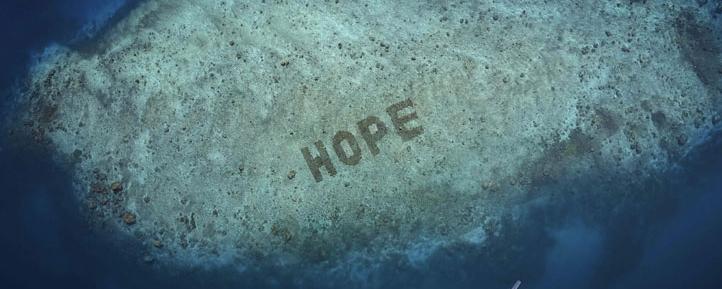 What does cat food have to do with coral reefs? Mars Petcare catfood brand SHEBA® has partnered with The Nature Conservancy to develop what it claims is the world’s largest coral restoration program, expected to cover more than 185,000 square meters around the world by the end of 2029.
What does cat food have to do with coral reefs? Mars Petcare catfood brand SHEBA® has partnered with The Nature Conservancy to develop what it claims is the world’s largest coral restoration program, expected to cover more than 185,000 square meters around the world by the end of 2029.
Earlier this month, the partner organizations unveiled the first images and videos of ‘Sheba Hope Reef’, the starting location for the global initiative. Work to restore the reef, off the coast of Sulawesi, Indonesia, began two years ago and, in that time, coral cover has increased from, 5% to 55%. The reef, which can be seen on Google Earth, has been built to spell the word H-O-P-E and is intended as a symbol to show the world how positive change can happen within our lifetime.
Hope Reef uses innovative ‘Reef Star’ technology – 90cm-wide, star-shaped, steel structures that are handmade by the local community in Indonesia. Each star is joined underwater to create a strong web that covers the seabed and provides a stable base for coral fragments to regrow.
Edie reports that to date, Mars has spent around $10m on research, restoration, and community engagement around coral reefs, as part of its $1bn ‘Sustainable in a Generation Plan’. Aside from Sheba, the firm owns the brands Whiskas, Cesar, and Iams. The procurement of ocean products for these brands is where the link to marine habitats comes in.
As well as the funding coming directly from Mars, consumers will be encouraged to contribute by watching a documentary-style video about the work at Sheba Hope Reef on YouTube. Called ‘The Film That Grows Coral”, the video has been monetized by YouTube and all funds raised will be invested in The Nature Conservancy.
Help Restore Coral Reefs. Watch The Film That Grows Coral | Sheba Hope Reef
Thanks to Alaric Bond for contributing to this post.

Very nice story. Thankyou for posting it Rick
Cat food producers acting in their own best interests: they need fish for cat food.